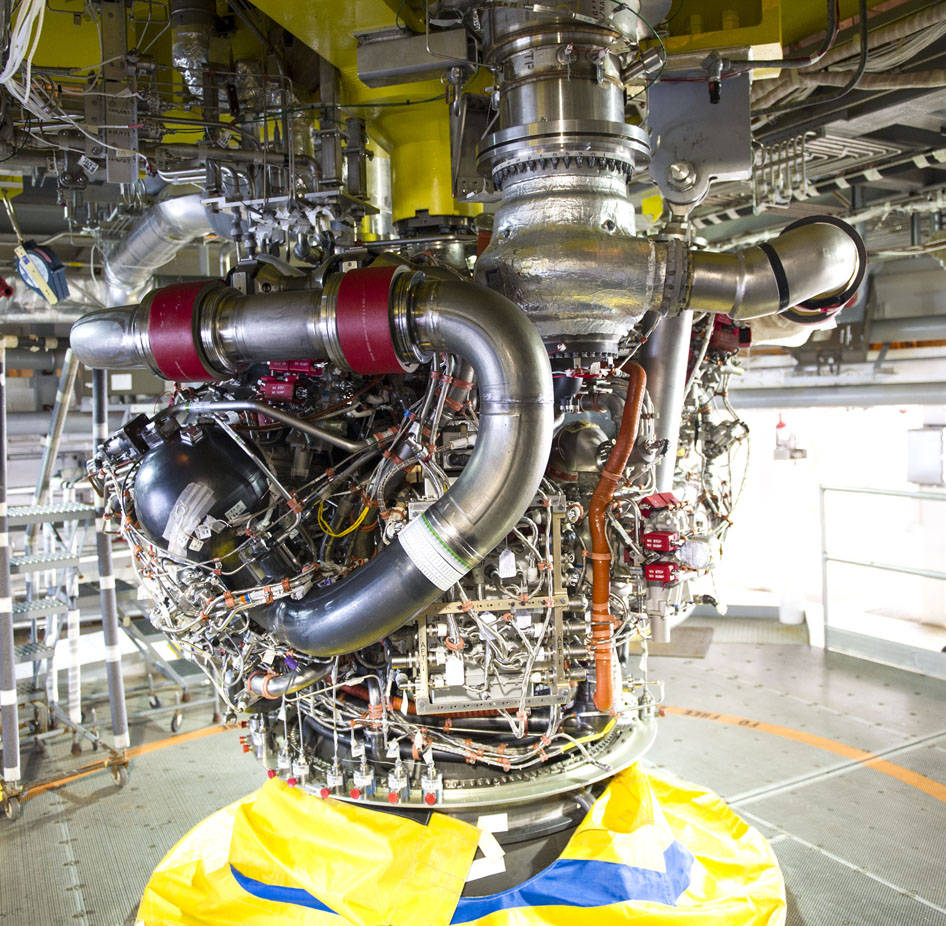Testing of the rocket engines for NASA’s new Space Launch System (SLS) took another giant leap forward Oct. 24 with the RS-25 engine and its new engine controller unit in place on the A-1 Test Stand at Stennis Space Center. Pending final preparation and activation work, the first engine firing test is scheduled to begin by the end of the year with addition tests continuing into 2015. The SLS Core Stage will be powered by four RS-25 engines originally developed for the Space Shuttle Program, as well as a pair of Shuttle-heritage solid rocket boosters. SLS will carry humans deeper into space than ever before. The engine will be tested at the higher thrust and other operating requirements for the SLS, as well as the new engine controller. The advanced controller regulates valves that direct the flow of propellant to the engine, which determines the amount of thrust generated during an engine test. In flight, propellant flow and engine thrust determine the speed and trajectory of a spacecraft. The controller also regulates the engine startup sequence that is especially important on an engine as sophisticated as the RS-25. Likewise, the controller determines the engine shutdown sequence, ensuring it will operate properly under both normal and emergency conditions.
2 min read





























